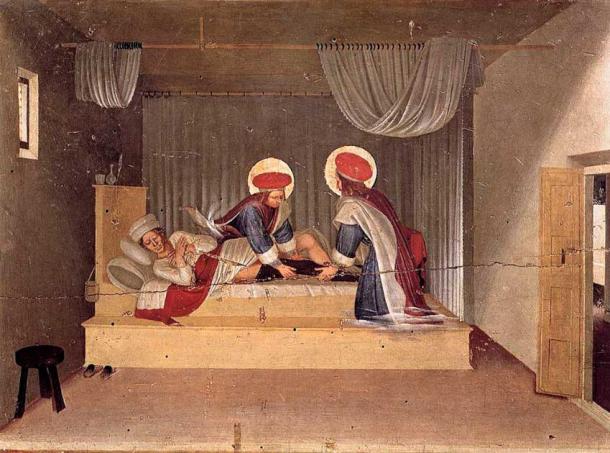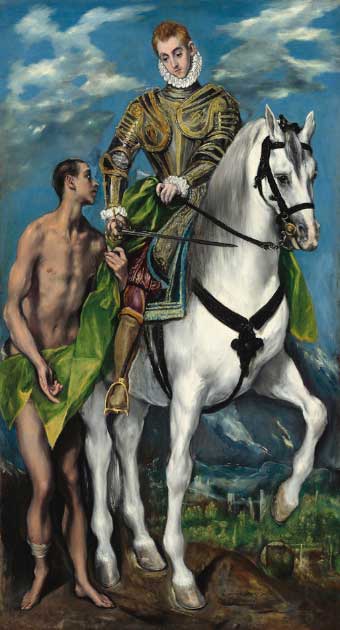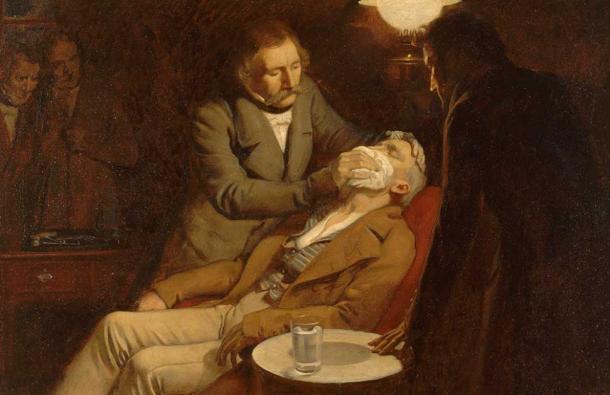
The Healing Arts and Spiritual Mumbo-Jumbo in the Ancient World
The history of medicine is an amazing tale. Not only that, but a peek beneath the covers can hopefully help us understand some of the bizarre worldviews confronting us today in the realm of healthcare and disease. Before the arrival of medical science, ancient remedies and healing beliefs worked more for their placebo effect, rather than their ability to actually bring about a cure.
Healing in the Ancient World
The healing arts go back to the beginnings of recorded history: to Egypt and Babylon, and of course, to Greece. Though almost all their prescriptions — according to modern scholars — were at best useless and at worst fatal. Early Babylonian medical records culled from cuneiform tablets mention some 250 drugs coming chiefly from animal, vegetal, and mineral sources. As in other early cultures of the time, human and animal excrement was one of the most common remedies.
The ancient Egyptian Ebers Papyrus, a medical document dating back to about 1500 BC, lists over 800 prescriptions whose ingredients included: dirt and flyspecks scraped off walls; the blood of lizards, cats, and other animals; the fat of geese, oxen, cats, snakes, hippopotami and mice, and even the fat of a eunuch.
The list features amongst its revolting concoctions ram’s hair and beetles, teeth of swine, hoof of ass “and the urine of children, adults, and menstruating women, which were credited with different medicinal effects.” To restore a husband’s potency — and this one’s hard to believe — “the head of a baby crocodile, rubbed in oil, was rubbed on a man’s penis”.
- Therapies, Pseudo-Science and Bizarre Remedies of Egyptian Medicine
- Were Asclepian Centers Powered By Magical Ritual or Holistic Healthcare?
Even the Greeks, with their love of science, staged some pretty striking performances. Take Asclepius, the great healer, who eventually became a god. Carved in the lintels above many of his 300 healing sanctuaries were the words: “Death Cannot Enter Here.”
The healing process was elaborate. Admission involved a ritual bath, followed by fasting and fumigation. On entering the inner court, the patient was greeted by an acolyte making offerings before a gold and ivory statue of the god. A priest then prepared the patient for sleep, lowering him onto a palette covered with the skin of an animal sacrificed to the deity, before dressing himself in white, to help induce the healing dreams.
The patient, hovering between the sleep and waking state, was visited by another priest in the guise of a god, who spoke in an otherworldly voice, inducing the visitor to dream of Asclepius walking among them, accompanied by his ever-present serpent and sacred dog. The priest would then “anoint the diseased part with salves and medicinal herbs and direct the serpent or dog to creep over the sleeper, lick the diseased area, and whisper remedies into his ear.”
“Recorded cures included the delivery of a woman pregnant for five years; the cure of a bald man, who was endowed with hair overnight; and the cure of a Spartan girl suffering from dropsy, whose head Asclepius cut off, held upside down to drain the fluid, and finally replaced on her neck,” explained Shapiro in The Powerful Placebo.

Asclepius, the Greek god of medicine, was seen to represent healing within medicinal arts. (zwiebackesser / Adobe Stock)
Healing Shrines in the Ancient World
There was a long tradition of healing shrines in the ancient world. Several Egyptian gods — especially Isis — were known for their healing magic. The Greek historian Diodorus comments: “All the world is eager to bestow honors on Isis because she clearly displays her power to cure disease.” Isis herself was sometimes referred to by the Greeks as Hygeia, or health deified. As you might imagine, the healing fees ( iatreia) were a major source of income for the sanctuaries.
Throughout the Greek world, wherever there were shrines of healing, we find replicas, marble reliefs, or inscriptions containing lists of body parts offered in gratitude, or in hope, of cure. All in all, over 150 sites were discovered. Considering some of the replicas — some internal organs, for example — it’s clear that many of the offerings were also a plea for healing.
It’s worth taking into account some of the findings of modern archaeology as related to mortality rates. One study concluded that “a third of children died before their first birthday, and almost half died before their fifth” in the ancient world.
Further east, Chinese medicine used almost every substance known to man; its pharmacopeia contained over 18,000 drugs and prescriptions. Acupuncture was the most widespread treatment in China for 2,500 years and is common today. Though licensed by many states in the US, it still has its skeptics as its benefits have not been confirmed by sufficiently controlled studies.

The Healing of Justinian by Saint Cosmas and Saint Damian, included in the San Marco Altarpiece. Their shrine was believed to be a site for healing the sick. (Public domain)
In the Medieval World, Try the Sex Cure
It’s always a good idea to get a second opinion as there are always alternative ways of curing particular ailments. One example, described by John Wortley in a collection of miracula from his Studies in the Cult of Relics in Byzantium, took place at the shrine of Saints Cosmas and Damian in Constantinople in the 7th century.
“It seems our narrator, a distinguished citizen of the city, had fallen prey to some disease, and decided to spend time in the house of the saints, in the hope of a cure. On his right lay a respectable lady, who through some affliction, had lost her ability to speak. On his left, a man who was paralyzed in both legs. When the three of them had lain there for some time, the servants of God (Cosmas & Damian) appeared to the paralytic and said: "If you wish to be mended, lie with the woman. Think not of the matter as shameful, but dwell solely on the healing power of the saints." For they did not give this order for him to make love to her, but to provide a path to their well-being. The man awoke, supposing the vision a dream. But the saints appeared to him a second time and repeated their prognosis. Again, he dismissed it as a dream. But on the third appearance, they warned him not to ignore the power––their dynamis. Or else: the divine schtoop (punishment unspecified). Waiting until nightfall, the paralytic approached the woman––crawling on his… and lay his hands upon her. And she, casting off both sleep and speechlessness, cried out to the passersby, to drive away the evildoer who had come upon her. When the paralytic saw the people running toward him, he jumped to his feet and rushed off; stumbling over our narrator, who later reports that the two beneficiaries of the saints' blessing... were later happily joined... in wedlock.” (Wortley)

Digital reconstruction of the Thomas Beckets shrine, who many believed had the power to cure the sick and bring about healing miracles. (Dr. John Jenkins / Taylor & Francis Group)
Christian Relics and the Case of Thomas Becket
The relics, and assumed relics, of saints were one of the main treatments for disease in Europe for over a thousand years. They were reputed to heal everything from blindness to erectile dysfunction. In all fairness, there were only two ways to cure illness in the pre-modern world: see a doctor or visit a holy relic.
The first was expensive and had the potential to kill you. Meanwhile, the worst that could happen from the second was that you’d lose a little money, while seeing a bit of the world and potentially getting some relief. Given our modern research into placebos and psychosomatics, some people may have even been cured. According to Cyril (Acts 3:2-7), “Peter and John... healed the lame man at the Gate Beautiful merely by looking into his eyes, and elsewhere the mere shadow of Peter is said to have worked cures.”
Of course, just as today, people have historically been lured in by novel cures. As he was dying, one popular preacher in Greece (around 1000 AD), summoned the waiting crowd to his deathbed. As soon as he expired: “One (person) hastened to carry away something from the squalid locks on the blessed man's head; another, something from the hairs in his beard; still another, a patch from his old cloak and from his goatskin outer garment. And so it was a great and illustrious thing for all, to carry away some of the things touching the skin of the holy remains, for relief from suffering and every sort of disease.”
Then there was the drama of Thomas Becket, Bishop of Canterbury, immortalized in the 1964 film Becket starring Richard Burton. His murder, according to reports, "brought on a furor of scavenger.” According to one source, “as he lay still on the pavement... some daubed their eyes with his blood, others who had brought little vessels made away with as much as they could, while others eagerly dipped in parts of their clothes they had cut off.”
To borrow a few lines from historian Charles Freeman, writing in Holy Bones. Holy Dust:
“A witness to the murder, who had dipped his shirt in the saint's blood, took it home that night to his paralyzed wife. She asked that the blood be mixed with water and she be washed with it. Her paralysis was cured immediately. Ampoules containing the diluted blood were soon circulating. 'Innumerable sick' were cured, those on the point of death survived, and the blood 'even succeeded in bringing some back from the dead.’”
One educated observer, John of Salisbury, reported that “the paralyzed are cured, the blind see, the deaf hear, the mute speak, the crippled walk... and the possessed are freed from the devil.” Eventually there were two volumes with a total of 400 miracles from the shrine in Canterbury alone.

The legend of Saint Martin claims that he gave his cloak to a beggar, a story depicted in this painting by El Greco. Gregory of Tours later set up a shrine to his memory, which became a prime destination for pilgrims on route to Santiago de Compostela hoping to be cured from their ailments. (Public domain)
Bishop Gregory of Tours and the Healing Shrine of Saint Martin
Gregory, as one historian described him, was an impresario, responsible for setting up a shrine to Saint Martin, an event that really put the French city of Tours on the map. People would come from great distances to sleep at the tomb of Saint Martin. A crippled nun was able to walk again after dreaming the saint was stroking her limbs. While it does sounds a little naughty, it seems to have worked.
Martin was a Roman soldier who had given away his cloak to a beggar and who that night had a vision of Christ wearing the cloak Himself. The vision was so powerful that soon after, he had himself baptized. Martin became a true ascetic and his ragged appearance upset the local religious hierarchy, who came mostly from the ermine-fringed aristocracy. But for that reason, and several miracles he was said to have performed, he drew a large following among the poor, which included almost everyone else.
Gregory was also an historian; typical of his generation in believing that sickness and disabilities were caused by sin. During his era, in the 6th century, the list of sins was pretty daunting. In fact, Gregory left behind a list of offences that had crippled or blinded some of his pilgrims. These included terrible offenses such as “repairing a fence during Lent; or baking, the night before Sunday.”
Bishop Gregory of Tours even warned that sexual intercourse before a holy day would lead to children “who were born crippled or would suffer leprosy or epilepsy.” Early Christian writers believed that medical intervention was an attempt to undo God’s work. Gregory, one of the most learned men of his day, actually stressed the immorality of medicine, as physicians sought “to change God’s judgment.”
Such beliefs lasted well into the 12th century, judging by a comment made by another very influential churchman, Bernard of Clairvaux, when he claimed that: “to consult physicians and take medicine — befits not religion and is contrary to purity.”

The first use of ether, a surgical anesthetic in dental surgery, oil painting from 1846 by Ernest Board. (Wellcome Images / CC BY 4.0)
The Arrival of the Scientific Revolution
“The great lesson... of medical history is that the placebo has always been the norm of medical practice,” explained Shapiro. The true task of ancient doctors and healers was “dealing with the emotions of men.” In other words, they themselves were the therapy that sometimes brought about a cure.
Still, as the 12th century wore on, the scientific revolution — with its emphasis on observation and experimenting and careful record keeping — began to dispel some of the murderous mumbo-jumbo that had been the stock-in-trade of physicians.
- Thomas Becket’s Sacred Healing Shrine Digitally Reconstructed
- Ancient Healing Methods Offer an Alternative Paradigm in Health
Since a lot of these new methods came from Arabic translations of Greek works, “it was relatively free of Christian dogma.” The 12th century, as historian Ian Mortimer observed, “marks the start of the process by which men and women came to trust their fellow human beings rather than God, with their physical salvation, and systematically employed medical strategies to cope with sickness, rather than relying on prayer or magic.”
But hearts and minds do not change overnight. Even in the 17th century, with its quantum leaps in medical science, the question remained: If you fell ill, should you send for the doctor or the priest? English medical records reveal that faced with a life-threatening condition most people still sent for the priest.
Gradually, dying men and women began to send for both. Slowly, as outcomes spoke for themselves, the physician begins to replace the priest as the best way to save your life. Nevertheless, when anesthesia was introduced into obstetrics in the 19th century, to keep the pain of childbirth in check, it was met with a storm of protest based on the third chapter of the Book of Genesis.
Top image: Depiction of Anubis supervising mummification from a sarcophagus painting dating back to 400 BC. Source: André / CC BY-SA 2.0
This and related topics are examined more deeply in Steven Darian’s volume, The Heretic’s Book of Death & Laughter: The Role of Religion in Just About Everything , available from Amazon.
By Steven Darian
References
Brown, P. 2013 (rev.). The Rise of Western Christendom. West Sussex: Wiley-Blackwell, pp. 241-245.
Freeman, C. 2011. Holy Bones. Holy Dust. New Haven: Yale, pp. 4-5.
Gruman, G. 1966. “A History of Ideas about the Prolongation of Life: The Evolution of the Prolongevity Hypotheses to 1800” in Transactions of the American Philosophical Society, 56, No. 9, p. 26.
Houston,W.R. 1938. “The doctor himself as a therapeutic agent” in Annals of Internal Medicine. 11(1938), pp. 1416–1425.
Laskow, S. 18 November 2016 “Why Did Ancient Italians Bury Thousands of Clay Body Parts?” in Atlas Obscura. Available at: https://www.atlasobscura.com/articles/why-did-ancient-italians-bury-thousands-of-clay-body-parts
Mortimer, I. 2016. Millennium. NY: Pegasus.
Shapiro, A. & Shapiro, E. 1997. The Powerful Placebo. Baltimore: Johns Hopkins.
Wortley, J. Studies in the Cult of Relics in Byzantium up to 1204. Burlington, Vermont: Ashgate.
















Comments
Well, if some sick tyrant was eating ‘the fat of a eunuch’ for health benefits, we can guess what they did with the first parts that were cut off. What’s the source of this so-called fact/diversion? But as may relate to such cannibalism, what really was the “white manna” that sustained the Israelites through the desert – which may also relate to the term “purple people eaters”, with respect to the disappearance of the Canaanites (called ‘the purple people’ for their mollusk shell-dyed fabrics) after the Israelites arrived and conquered them.
Nobody gets paid to tell the truth.